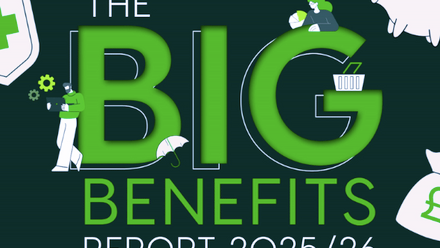Webinar Q&A: mapping out a corporate wellbeing journey

In this short Q&A we address the key questions we ran out of time to ask. If you missed the webinar, you can still watch the Mapping out a corporate wellbeing journey recording.
Are there any resources or stats on CEO ownership of wellbeing? Should wellbeing sit within HR?
The REBA/AXA Health Employee Wellbeing Research 2021 revealed that wellbeing programmes are increasingly joined-up and more in sync with employers’ overarching goals and purpose (20%). In addition, 95% of businesses had identified a high pressure/ high intensity working environment as a key business risk.
In our 2020 Employee Wellbeing Research, we asked who owns wellbeing within organisations, and found that this is predominantly HR’s responsibility.
From the 2020 report: “We asked respondents which department had overall responsibility for their wellbeing spend. For over half of organisations (52%), the HR department has the final sign-off on the wellbeing budget, while at a quarter (25%) this decision rests with the finance department. Where neither HR nor finance are involved, responsibility tends to be taken by the CEO, board or senior leadership team. Very few respondents give responsibility for the wellbeing budget to dedicated occupational health or corporate risk departments.”
Do you think we should be looking to bring in a wellbeing generalist to own wellbeing in businesses to coordinate the skills of HR, D&I & benefits?
This is a great question and one that is likely to be dependent on the size and type of organisation. Generally speaking we at REBA are seeing more ‘wellbeing’ roles emerging within businesses. Other than overseeing wellbeing initiatives, their role is often to bring together the different business areas that influence and effect wellbeing.
As Dr Chris Tomkins said at the end of the webinar: “Wellbeing does sit in various spaces. Diversity & Inclusion is often owning wellbeing which does make a lot of sense, employee benefits obviously as well. There's some connections that need to be made within companies to build collaboration, to really make wellbeing work.
“We need senior stakeholder ownership – in some ways it’s better that it’s not [always] the HRD. Certainly every time that we've seen a board stakeholder really step forward and own it, it has been transformational in the way that the business has engaged with wellbeing,” says Tomkins.
“There is a role here, also, for providers. The more that we can connect the dots and aggregate things from our side, probably the easier we can make it. Definitely it's a team sport, and we've got to make that work.”
Listening to your employee base is the first step towards an effective wellbeing programme. But 'how' do we listen to them? Are there tools you can recommend to do this more effectively?
It is absolutely right that listening to your employees is one of the first steps in understanding how to build an effective wellbeing strategy – it is something we hear time and again from both employers and the providers that support them.
What this listening exercise consists of will often be down to the type of organisation, however a variety of approaches is important to ensure that it reaches as many parts of the workforce as possible. This can include elements such as: regular pulse surveys; annual engagement surveys (which cover wellbeing); gathering feedback from employee network groups and focus groups; gathering feedback from staff representatives such as mental health first aiders and union representatives; and even basic suggestion boxes.
Here are a selection of articles from REBA’s members describing how they gather wellbeing information from their employee base:
- Video: Laura Jackson of Credit Suisse on the value of employee networks to support wellbeing (reba.global)
- Tina Samson of Molson Coors on using a continuous listening approach to mental wellbeing (reba.global)
- Case study: how DWP supported colleague wellbeing throughout the COVID-19 pandemic (reba.global)
- Six tips to test the transparency of your reward and benefits communication strategy (reba.global)
We know that a main problem with wellbeing programmes is low engagement. What do you recommend are the best ways to boost this? How do we encourage people to actually utilise the services they have?
Our latest Employee Wellbeing Research (2021) showed that 72% of employers use employee engagement as a measurement to gauge the effectiveness of their wellbeing initiatives. So it comes as no surprise that finding ways to boost employee engagement is high on the agenda.
More often than not, awareness of benefits programmes is seen as a barrier to engagement. The REBA/Buck Technology Research 2021 revealed that 63% of employers felt this to be the case. This is why, for those reviewing their benefits software, 64% are aiming to boost employee engagement.
As the research notes, “findings indicate that greater personalisation and targeting of benefits communication via tech may, in part, be the answer”.
A second element to consider is the insight you can gain from data. Our Technology Research highlighted that by utilising data to improve the employee experience – through greater personalisation of communications and benefits – engagement can be boosted.
“Reward and benefits managers are keen to see technology work to enhance data analytics capabilities to gain richer insights and, again, boost engagement,” found the report.
Here are a selection of articles from REBA’s members highlighting how they are communicating with and engaging their employees:
- Video: Tracey Newton director of colleague experience at YBS on engaging staff with wellbeing (reba.global)
- Innovation series: rethinking reward and benefits with Andrew Baillie of Ocado (reba.global)
- Webinar: Rethinking communication and benefits to reshape workforce culture (reba.global)
For more insights on this topic, watch the webinar recording.






